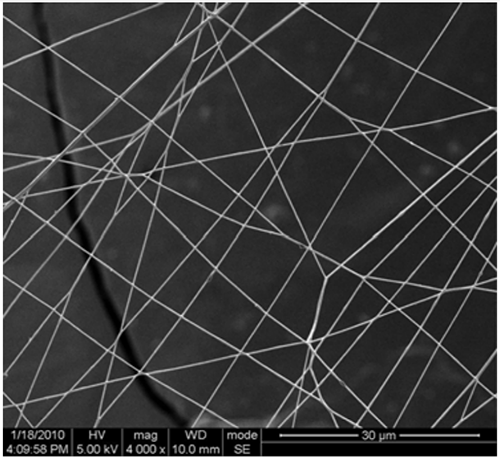Copyright © 2022 Foshan MBRT Nanofiberlabs Technology Co., Ltd All rights reserved.Site Map
By combining the organic-inorganic hybridization, wet phase inversion, and electrospinning, novel electrospun polyurethane (PU) membranes with in-situ generated nano-TiO2 were prepared, which satisfied the requirements of an ideal wound dressing. The morphology of the PU-TiO2 mats and the cross sectional morphologies of the membranes were characterized by a scanning electron microscopy (SEM). The average diameter of the individual fibers obtained from the solutions was 341±12 nm. SEM micrographs with higher magnification further showed that the in-situ generated TiO2 particles were well-separated and dispersed homogeneously in the membranes. The average sizes of TiO2 particles were increased from 31 to 57 nm, with the increase of nano-TiO2 concentration. The water vapor transmission rates (WVTRs) of the membranes were in the range of 373.55-3121.86 g/m2 ·d and decreased gradually with the increase of nano-TiO2 concentration. The water absorption of various PU membranes was in the range of 210.90-397.98 % which was enough to prevent wound beds from exudate accumulation. Shake flask testing indicated that the PU membrane exhibited antibacterial efficiency against Pseudomonas aeruginosa (Ps. aeruginosa) and Staphylococcus aureus (S. aureus) due to in-situ generated of nano-TiO2. These electrospun nanofibrous membranes also had no toxic effect and showed good and immediate adherence to L929 cells.

Published:2021
Journal:Fibers and Polymers
Impact Factor:1.769
Paper link:https://link.springer.com/article/10.1007%2Fs12221-011-0207-0